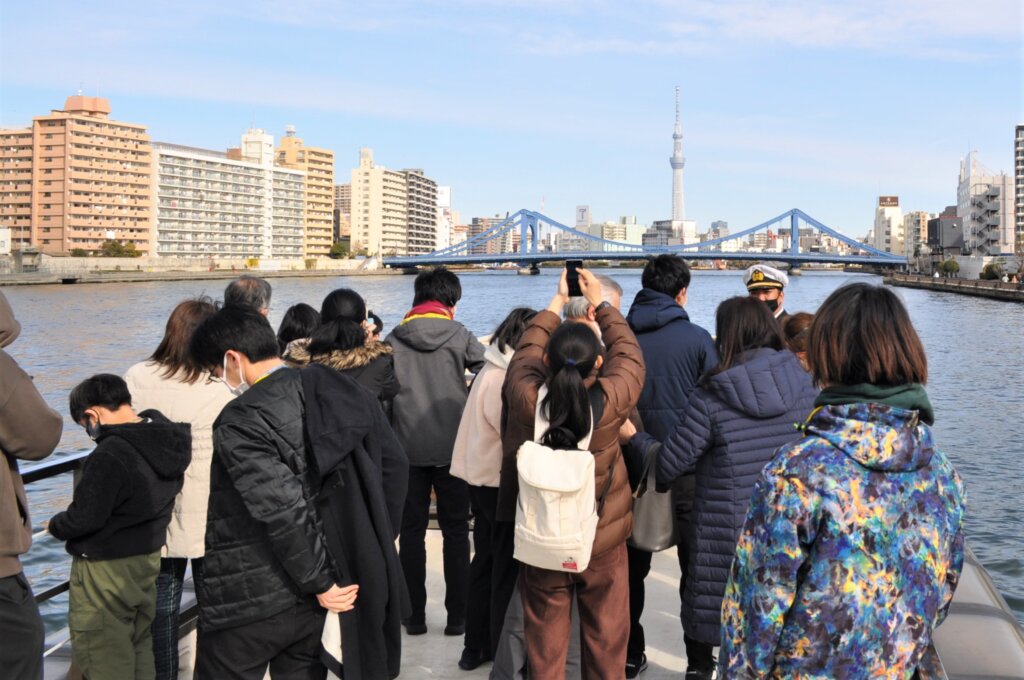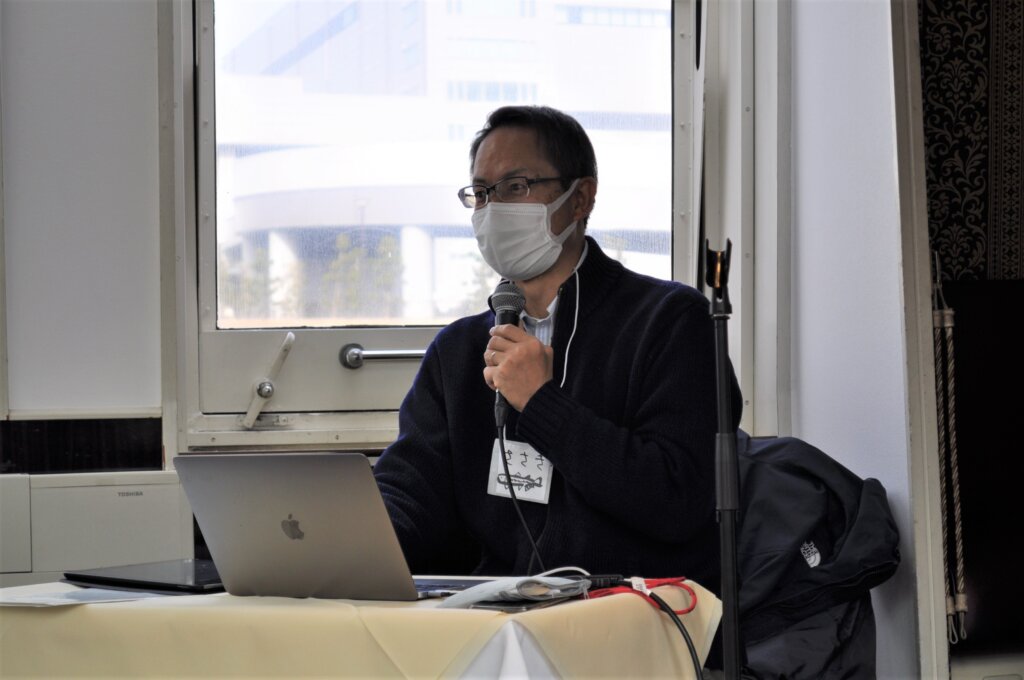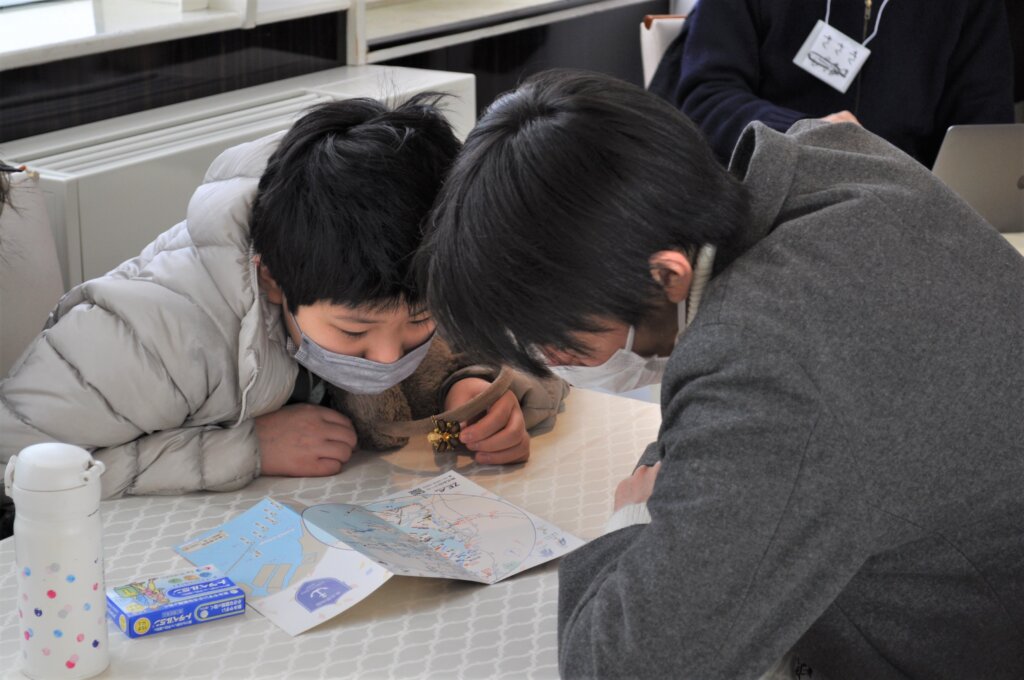Let’s Find Out More About Forests, Rivers and Sea of Tokyo
Let’s Find Out More About Forests, Rivers and Sea of Tokyo
-Exploration of Tokyo by Cruise Boat and Bus-
Date: January 30, 2022
Time: 9:30 am – 4:00 pm
We carried out the field study tour titled “Find Out More About Forests, Rivers and Sea of Tokyo” with the co-sponsorship with Minato City Board of Education and Aquatic and Marine Environmental Education Research Laboratory of The Tokyo University of Marine Science and Technology (TUMSAT) supported by General Incorporated Association Takeshiba Area Management and General Incorporated Association Takeshiba Town Design. 31 people ranged from elementary school students to adults in addition to 40 TUMSAT students participated in this tour. We visited canals as well as Sumida River by cruise boat in the morning, and Furukawa River and Kanda River by bus in the afternoon during which we all thought over forests, rivers and sea of Tokyo as well as the interrelationship among them.

We started from Hinode Sanbashi, the meeting place for the tour, by the cruise boat at 9:35 am and visited Ooi Wharf, Daiba, Shinonome Canal, Toyosu Canal, Sumida River, Tukiji and Hamarikyu Gardens. After getting on board, participants were divided into 9 groups. TUMSAT students joined each of the groups as moderators. All those groups enjoyed the lectures given by Professor Sasaki and group discussions alternately. Very active discussions and exchange of views were made among participants on the sea and relations between people and sea based on such questions posed as “why the Rainbow Bridge is so tall”, “why Daiba was built”, “why Toyosu was selected as the site for the relocation of Tsukiji Wholesale Market”, “why so many cultural figures gathered in Fukagawa District during Edo Era”, “why so many schools were built in Akashi-cho of Tukiji”, and so on, all of which are closely related with very familiar places and their histories.


In the afternoon, we visited riversides of Furukawa River, Shibuya River, Kanda River, Sumida River by bus via Shiba Area, Tokyo Tower, Azabu Juban, Arisugawa Memorial Park, Shibuya, Yoyogi Park, Shinjuku Gyoen National Garden, Hanazono Shrine, Edogawa Park, etc. Professor Sasaki and students of TUMSAT gave short lectures on forests, rivers and sea of Tokyo as well as the history of water and peoples’ lives. Above all, Professor Sasaki gave a very comprehensive lecture on the history of peoples’ lives making use of the terrain and indigenous knowledge, and what can be done to minimize the burden imposed on the sea whereas peoples’ lives largely affect the sea.
We at MUA are very proud that we could provide the participants with an opportunity to feel close to the sea and observe the City of Tokyo from a new perspective. At last, but not the least, we would like to express our sincerest appreciation for the great cooperation and assistance extended by Professor Sasaki and students of TUMSAT.
(Written by YOKOI A., the International Science and Culture Committee, and translated by SUDA Y., the PR and Internet Committee Associate)
